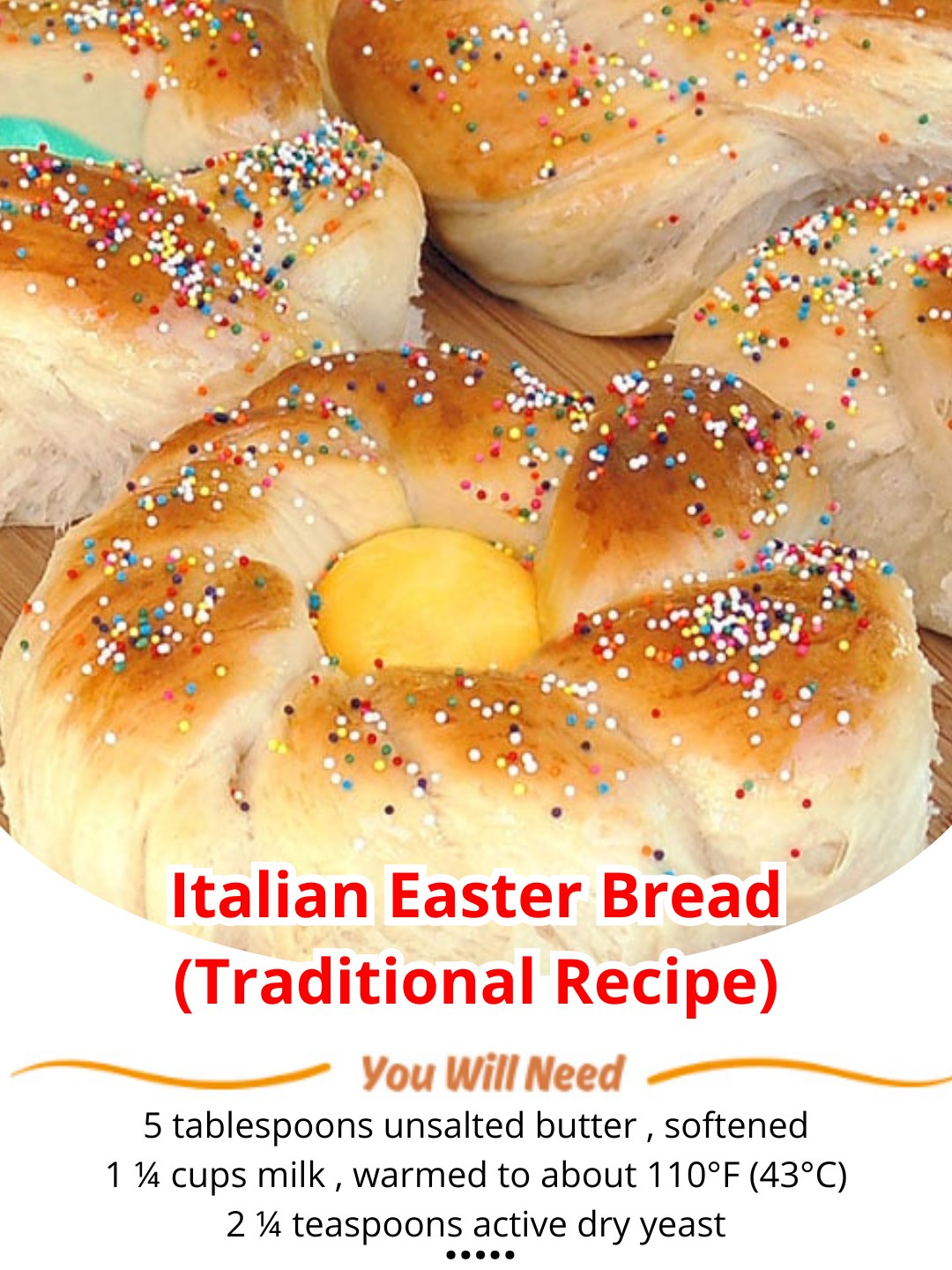Introduction
Italian Easter Bread, or “Pane di Pasqua,” is a beautiful and symbolic sweet bread traditionally baked and enjoyed during Easter celebrations in Italy. More than just a delicious treat, it represents rebirth, renewal, and the end of Lent. This recipe guides you through creating a stunning and authentic Italian Easter Bread that will impress your family and friends.
The Magic of Italian Easter Bread
Symbolism and Tradition
The circular shape symbolizes eternity and the unending cycle of life. The eggs, often dyed bright colors, represent rebirth and new beginnings, central themes of the Easter holiday. Each family often has its own unique twist on the recipe, passed down through generations, making this bread a cherished culinary tradition.
Ingredients You’ll Need
To create a truly authentic Italian Easter Bread, gather these key ingredients:
- Flour: All-purpose flour is the most common choice, but bread flour will give a slightly chewier texture.
- Yeast: Active dry yeast is typically used, but instant yeast can also be substituted.
- Sugar: Granulated sugar adds sweetness and helps feed the yeast.
- Butter: Unsalted butter adds richness and flavor.
- Eggs: Eggs provide structure, richness, and color.
- Milk: Warm milk helps activate the yeast and adds moisture.
- Lemon and Orange Zest: These add a bright, citrusy aroma and flavor.
- Anise Seeds: A classic addition, anise seeds provide a distinctive licorice-like flavor. Adjust to your preference.
- Vanilla Extract: Enhances the overall flavor profile.
- Salt: Balances the sweetness and enhances the other flavors.
- Dyed Eggs: Raw eggs, dyed with food coloring, are baked into the bread as decoration.
- Sprinkles (Optional): Colorful sprinkles add a festive touch.
Step-by-Step Recipe
- Activate the Yeast: In a small bowl, combine warm milk, sugar, and yeast. Let it sit for 5-10 minutes until foamy.
- Combine Dry Ingredients: In a large bowl, whisk together flour, salt, and anise seeds (if using).
- Add Wet Ingredients: Add the yeast mixture, melted butter, eggs, lemon zest, orange zest, and vanilla extract to the dry ingredients.
- Knead the Dough: Knead the dough for 8-10 minutes until it becomes smooth and elastic. You can use a stand mixer with a dough hook or knead by hand.
- First Rise: Place the dough in a greased bowl, cover, and let it rise in a warm place for 1-2 hours, or until doubled in size.
- Shape the Bread: Punch down the dough and divide it into strands. Form the strands into a circular wreath shape.
- Place the Eggs: Gently press the dyed, raw eggs into the dough wreath, spacing them evenly.
- Second Rise: Cover the shaped bread and let it rise for another 30-45 minutes.
- Bake the Bread: Preheat oven to 350°F (175°C). Brush the bread with an egg wash (egg beaten with a little water) and sprinkle with sprinkles (optional). Bake for 30-40 minutes, or until golden brown.
- Cool and Enjoy: Let the bread cool completely on a wire rack before slicing and serving.
Tips for Baking Success
- Use Fresh Ingredients: Ensure your yeast is fresh for the best results.
- Don’t Overbake: Overbaking can result in a dry bread. Use a toothpick to check for doneness. It should come out clean.
- Proper Proofing: Adequate rising time is crucial for a light and airy bread.
- Egg Washing: Egg wash helps the bread achieve a beautiful golden-brown color.
- Experiment with Flavors: Feel free to add other flavorings like almond extract or different types of citrus zest.
Conclusion
Baking Italian Easter Bread is a rewarding experience that connects you to a rich cultural tradition. With this recipe and these tips, you can create a delicious and beautiful bread to share with your loved ones this Easter. Enjoy the process and savor the flavors of this classic Italian treat. Buon Appetito!
